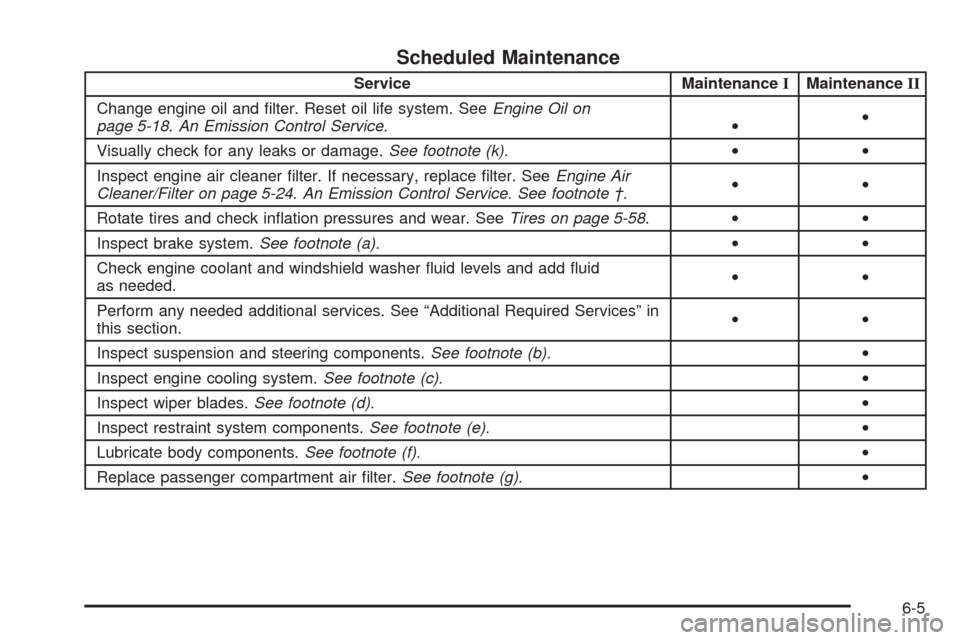tire pressure reset CADILLAC CTS 2004 1.G Owners Manual
[x] Cancel search | Manufacturer: CADILLAC, Model Year: 2004, Model line: CTS, Model: CADILLAC CTS 2004 1.GPages: 454, PDF Size: 2.87 MB
Page 176 of 454

Tire Pressure
When the tire pressure is displayed you will see a
vehicle in the display. The numbers in each corner
represent the tire pressure for the corresponding tire.
The tire pressure will be displayed in psi or kPa.
If any of the tires are blinking on the vehicle in the
display, this means that the tire pressure in that tire is
either high or low. SeeTire Pressure Monitor System
(CTS-V) on page 5-70for more information.
Lateral Acceleration
Lateral acceleration is a measure of how hard you are
taking a corner. For example, when you are turning right
you will feel your body push to the left. This force is
measured in a “g”. This gage will display from 0.00 g to
1.2 g. The lowest reading means there is no lateral
acceleration. The highest reading means the force the
driver is feeling is 1.2 times the acceleration due
to gravity.
When the lower button on the outboard switch is
pressed and held while the Lateral Acceleration display
is being shown, the peak hold values—both tick
marks and numbers—will be reset to zero.
Warning Messages
The warning messages that are described in the
following text are also shown in the tachometer display.
While any warning messages are shown, pressing
either button on the outboard switch will acknowledge
the warning and then display the gage relating to
the error message. For instance, if a tire is below the
minimum recommended pressure, the tire pressure
warning message will blink on and off (5 times for a
low tire warning, continuously for a �at tire warning).
The driver can go to the tire pressure display
immediately by pressing either button on the
outboard switch.
3-56
Page 366 of 454

Tire Inspection and Rotation
Tires should be rotated every 5,000 to 8,000 miles
(8 000 to 13 000 km).
Any time you notice unusual wear, rotate your tires as
soon as possible and check wheel alignment. Also
check for damaged tires or wheels. SeeWhen It Is Time
for New Tires on page 5-73andWheel Replacement
on page 5-77for more information.
The purpose of regular rotation is to achieve more
uniform wear for all tires on the vehicle. The �rst rotation
is the most important. SeeScheduled Maintenance
on page 6-4, for scheduled rotation intervals.When rotating your tires, always use the correct rotation
pattern shown here.
Do not include the compact spare tire, If your vehicle
has one, in the tire rotation.
After the tires have been rotated, adjust the front and
rear in�ation pressures as shown on the Tire and
Loading Information label.
If your vehicle has run-�at tires, the Tire Pressure
Monitor (TPM) system will need to have the sensors
reset after a tire rotation is performed. A special tool is
needed to reset the sensor identi�cation codes.
See your dealer for service.
5-72
Page 411 of 454

Scheduled Maintenance
Service MaintenanceIMaintenanceII
Change engine oil and �lter. Reset oil life system. SeeEngine Oil on
page 5-18.An Emission Control Service.••
Visually check for any leaks or damage.See footnote (k).••
Inspect engine air cleaner �lter. If necessary, replace �lter. SeeEngine Air
Cleaner/Filter on page 5-24.An Emission Control Service. See footnote †.••
Rotate tires and check in�ation pressures and wear. SeeTires on page 5-58.••
Inspect brake system.See footnote (a).••
Check engine coolant and windshield washer �uid levels and add �uid
as needed.••
Perform any needed additional services. See “Additional Required Services” in
this section.••
Inspect suspension and steering components.See footnote (b).•
Inspect engine cooling system.See footnote (c).•
Inspect wiper blades.See footnote (d).•
Inspect restraint system components.See footnote (e).•
Lubricate body components.See footnote (f).•
Replace passenger compartment air �lter.See footnote (g).•
6-5
Page 444 of 454

Hill and Mountain Roads..................................4-25
Hitches..........................................................4-42
HomeLink
®Transmitter....................................2-46
HomeLink®Transmitter, Programming................2-47
Hood
Checking Things Under................................5-10
Release.....................................................5-11
Horn............................................................... 3-7
Hot Coolant Temperature Warning Message........3-57
How to Add Coolant to the Coolant
Surge Tank.................................................5-36
How to Add Fluid............................................5-27
How to Check........................................5-27, 5-68
How to Check and Add Fluid............................5-28
How to Check Lubricant...................................5-51
How to Check Power Steering Fluid..................5-40
How to Inspect the Engine
Air Cleaner/Filter.........................................5-24
How to Reset the Change Transmission
Fluid Message and the Transmission Fluid
Indicator (Automatic Transmission).................5-26
How to Use This Manual...................................... ii
How to Wear Safety Belts Properly...................1-14
Hydraulic Clutch.............................................5-28
Hydroplaning..................................................4-21
I
Ice Possible...................................................3-78
If No Steam Is Coming From Your Engine..........5-33
If Steam Is Coming From Your Engine...............5-32
If the Light is Flashing.....................................3-48
If the Light Is On Steady.................................3-48
If You Are Caught in a Blizzard.........................4-30
If You Are Stuck in Sand, Mud, Ice or Snow.......4-32
If You Do Decide to Pull a Trailer......................4-40
Ignition Positions.............................................2-22
Immobilizer....................................................2-19
Immobilizer Operation......................................2-20
Infants and Young Children, Restraints...............1-32
In�ation - Tire Pressure...................................5-67
Instrument Panel
Cluster.......................................................3-38
Overview..................................................... 3-4
Instrument Panel Brightness.............................3-26
Interior Lamps................................................3-26
J
Jump Starting.................................................5-46
8